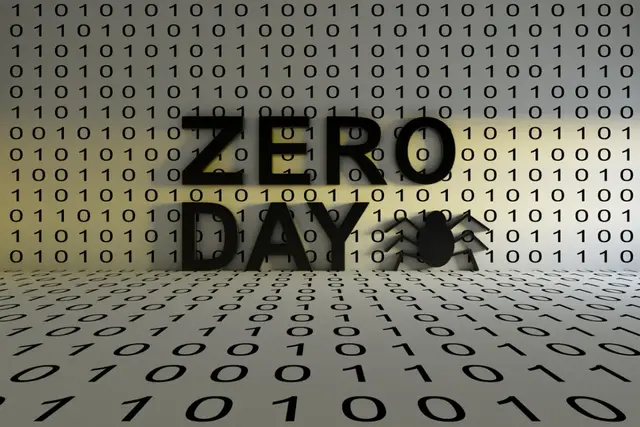What is Zero Day in Cybersecurity?

Cybersecurity is full of technical jargon, and perhaps one of the most common is Zero Day. Do you know what a Zero Day vulnerability, exploit, or attack is? This blog post will tell you in simple terms.
Understanding Zero Day
A Zero Day (0-day) in computer security is a software bug or security vulnerability that the software vendor or the developers are unaware of. Because the vendor is unaware, there is no patch or solution, which is a high-risk issue. Hackers can exploit these vulnerabilities before a solution is discovered, which is why they are risky.
The "Zero Day" label is that the vendor only has "zero days" in which to fix the problem before the vulnerability is actually exploited. Once the vendor is aware of the vulnerability, they rush to create a patch, but in the meantime systems are exposed.
Zero Day Vulnerabilities, Exploits, and Attacks
Zero Day Vulnerability
Zero day vulnerability is a security flaw in software, firmware, or hardware of which the vendor is not aware. Since it is not known, there is no patch or defense. Zero day vulnerabilities can be found by cybercriminals or researchers and they can choose to report or exploit them.
Zero Day Exploit
Zero day exploit refers to the method or tool by which hackers take advantage of a zero day vulnerability. It allows them to perform malicious activities such as data theft, malware installation, or unauthorized system access.
Zero Day Attack
A zero day attack is when a zero day vulnerability is used by an attacker to attack a system before a patch is released by the vendor. These attacks are dangerous because security software does not tend to detect or block them.
How do Hackers Locate Zero Day Vulnerabilities?
Zero day vulnerabilities are discovered in many different manners:
- Ethical Hackers & Security Researchers – Security professionals find these vulnerabilities through penetration testing and responsible disclosure initiatives.
- Cybercriminals & Hackers – Malicious hackers actively seek vulnerabilities to exploit them before they can be patched.
- Government Agencies – Intelligence agencies occasionally uncover and exploit zero day vulnerabilities for cyber warfare or espionage.
- Automated Scanning Tools – Malicious hackers and cyber attackers both utilize automated tools to scan programs for any potential vulnerability.
When discovered, the vulnerability is either disclosed responsibly or sold in the dark web, where they are purchased and utilized by the attackers.
Real-Life Samples of Zero-Day Attack
Stuxnet (2010)
One of the most famous zero day attacks was Stuxnet, which is a highly complex cyberweapon utilised to assault Iran's nuclear industry. It exploited several zero day Windows vulnerabilities and was used to destroy control systems in factories.
Google Chrome Zero Day Exploits
Google Chrome has experienced numerous zero day exploits in the past. As a popular web browser, it is easy for attackers to look up vulnerabilities to exploit security mechanisms and insert malicious code.
Microsoft Exchange Server (2021)
A devastating zero day attack affected Microsoft Exchange email servers, affecting thousands of organizations across the world. Attackers used unknown vulnerabilities to gain access to emails, passwords, and confidential information.
These illustrations serve to show why zero day vulnerabilities are such a significant issue for individuals, businesses, and governments.
How to Protect Yourself from Zero Day Attacks
Since zero day attacks are difficult to detect and evade, security professionals recommend the following best practices:
- Keep Software and Systems Current: Even though zero day vulnerabilities are unknown, installing security patches and updates as soon as they are released helps to cover known security holes.
- Utilize Advanced Threat Detection Tools: Next-generation antivirus applications and intrusion detection systems (IDS) can find suspicious activity that might signal a zero day attack.
- Apply the Principle of Least Privilege (PoLP): Limit user access and privileges on important systems. Even in the middle of an attack, limiting access reduces the harm it can cause.
- Install Strong Firewalls & Network Security: An optimized network segmentation and firewall will prevent unauthorized access to systems of significance.
- Monitor for System Anomalies: Security staff will need to utilize log analysis and real-time monitoring to detect malicious activity that may indicate a sustained attack.
- Adopt Zero Trust Security Models: Zero trust security doesn't take any user or device on trust. At all times, verification needs to be carried out to reduce the risk of attack.
- Participate in Threat Intelligence Networks: Security experts exchange information regarding emerging threats on threat intelligence platforms. Membership in such groups makes organizations aware.
What Happens After a Zero Day Discovery
Once a zero day vulnerability is found, this is most frequently done:
- Discovery – Ethical hackers, researchers, or cybercriminals find the vulnerability.
- Exploitation or Responsible Disclosure – The exploit may be responsibly disclosed to the vendor or exploited by the attackers.
- Vendor Response – The software vendor investigates the issue and develops a security patch.
- Patch Release – The vendor makes a security patch available to patch the vulnerability.
- Widespread Mitigation – Users and organizations apply the patch to protect their systems.
Sometimes security researchers keep vulnerabilities secret while they work with vendors to develop patches. But when cybercrooks are already taking advantage of the vulnerability, a rapid response is critical.
Conclusion
Zero day attacks and exploits are some of the most dangerous cyber attacks because they attack previously unknown loopholes. As much as a system cannot be made 100% secure, being vigilant, having updated software, and having strong security protocols can lower the risks. While technology advances, cybercriminals adopt new strategies to attack systems. Individuals and groups need to remain vigilant to counter these new vulnerabilities.




